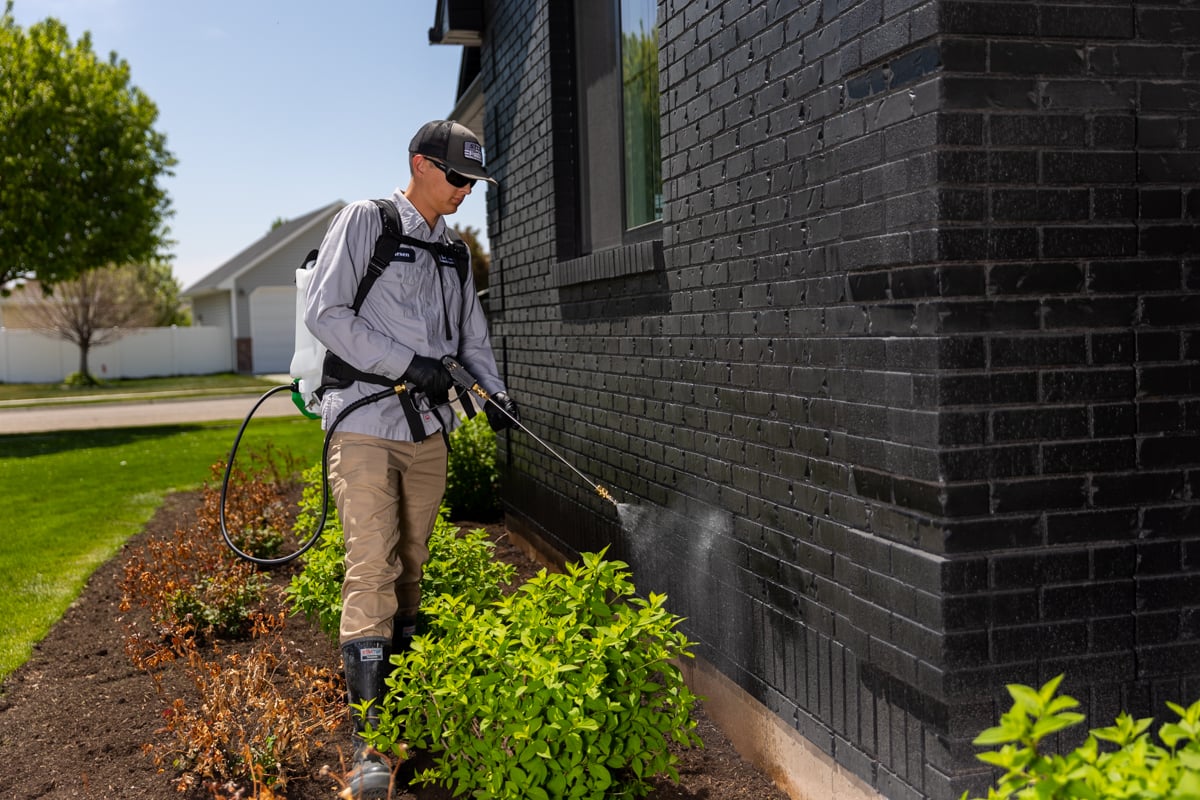Experienced A1 Exterminators Charlotte NC - Fast and Trustworthy Solutions
Wiki Article
Bed Bug Therapy Malfunction: Contrasting Chemical Vs. Non-Chemical Solutions
In the world of pest control, especially when taking care of the relentless issue of bed pests, the option between chemical and non-chemical therapy solutions can be an essential one. Both methods use unique benefits and drawbacks, influencing factors such as efficiency, safety and security factors to consider, and general price. By analyzing the nuanced details of each approach, a clearer understanding of which path to go after in addressing a bed bug invasion can be acquired.Effectiveness of Chemical Treatments
Chemical treatments for bed pest problems have actually been extensively recognized for their powerful and quick efficacy in getting rid of these parasites. When taking into consideration the effectiveness of chemical therapies, it is essential to understand that they can supply a extensive and quick service to a bed bug issue.Furthermore, chemical treatments have the benefit of supplying recurring effects, suggesting that they can continue to get rid of bed insects also after the preliminary application. This recurring action is specifically beneficial in combating any type of prospective re-infestations. Furthermore, the rapid activity of chemical treatments can bring relief to people encountering extreme bed pest invasions, allowing them to restore control of their home rapidly.
Safety Interest In Chemical Solutions
When utilizing chemical solutions for bed bug treatment is ensuring the safety and security of owners and the setting,One important element that requires careful consideration. While chemical treatments can be efficient in eradicating bed insects, they may posture threats otherwise handled effectively. One of the primary safety problems with chemical options is the potential damage they can trigger to human health and wellness. Exposure to specific chemicals utilized in bed bug therapies can bring about breathing problems, skin irritability, or other adverse responses, particularly in individuals with pre-existing conditions or sensitivities. In addition, incorrect application or dose of chemical pesticides can cause harmful residues remaining in the treated location, posing long-lasting health and wellness dangers to occupants.Furthermore, the ecological influence of chemical services is an additional substantial consideration. Some chemicals used in bed bug treatments may be dangerous to useful bugs, wildlife, and environments if they leach right into the dirt or water supply. It is necessary to utilize chemical therapies sensibly, adhering to security standards, and taking into consideration less toxic options to reduce these risks and ensure the safe and efficient administration of bed insect infestations.
Benefits of Non-Chemical Methods
Thinking about the possible security worries and environmental impact linked with chemical solutions for bed bug therapy, checking out non-chemical techniques presents a promising alternative with numerous distinct benefits. Non-chemical therapies are ecologically flea exterminator friendly, as they do not contribute to air or water contamination, making them a sustainable option for pest control.In addition, non-chemical remedies can be effective in targeting bed bugs, consisting of hard-to-reach areas where chemical therapies may not penetrate. Methods such as warmth therapy, vacuuming, vapor cleaning, and mattress encasements give extensive eradication without making use of damaging chemicals. Furthermore, non-chemical techniques can be much less disruptive, needing marginal preparation and permitting for quicker reentry into dealt with areas. On the whole, choosing non-chemical bed insect treatment methods not only focuses on safety and environmental management however additionally makes sure efficient and detailed parasite control.
Limitations of Non-Chemical Treatments

Furthermore, non-chemical therapies frequently require several applications to achieve effective obliteration. This can be time-consuming and may not always assure full removal of all bed pests and their eggs, especially in covert or hard-to-reach areas.
Furthermore, the success of non-chemical therapies greatly depends on appropriate execution and thoroughness, which can be challenging for individuals without specialist proficiency. Poor application of non-chemical approaches may result in insufficient obliteration, bring about relentless invasions and the demand for added therapies.
For that reason, while non-chemical therapies have their benefits, it is vital to recognize these limitations and consider them when determining one of the most home pest repellent reliable technique for managing bed bug problems.
Price Contrast: Chemical Vs. Non-Chemical Options
Given the restrictions connected with non-chemical therapies, an essential aspect to review in the context of bed bug management is the price comparison in between chemical and non-chemical options. In comparison, non-chemical treatments like warmth therapy or steam can be a lot more costly, with prices ranging from $1,000 to $6,000 for a whole home. While the preliminary cost of chemical therapies may seem reduced, numerous treatments might be required to totally remove the problem, potentially boosting the overall expense.Final Thought

Thinking about the possible safety concerns and ecological influence associated with chemical solutions for bed bug treatment, discovering non-chemical strategies provides a promising option with a number of distinctive benefits.Offered the limitations connected with non-chemical therapies, a vital facet to assess in the context of bed pest management is the cost comparison in between chemical and non-chemical alternatives. In comparison, non-chemical therapies like heat therapy or steam can be extra costly, with prices varying from $1,000 to $6,000 for a whole home. While the initial cost of chemical therapies might seem lower, multiple treatments may be called for to fully remove the infestation, potentially boosting the overall cost.In final thought, when comparing chemical and non-chemical bed insect treatment options, it is crucial to take into consideration effectiveness, safety, benefits, limitations, and price.
Report this wiki page